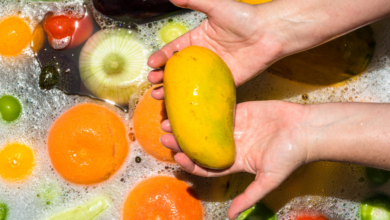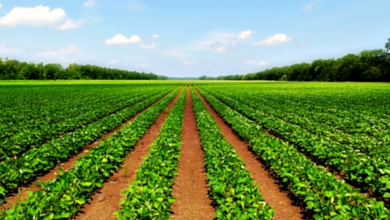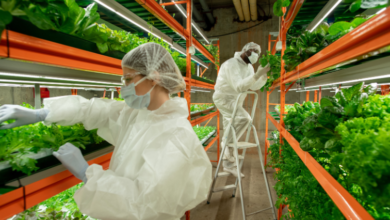
Growing Red Gold
The Magic of Strawberry Agriculture
Strawberries are among the most popular fruits in the world, prized for their sweet flavor, vibrant color, and nutritional benefits. The cultivation of strawberries is a significant agricultural industry, especially in the United States, where the crop is grown extensively in states like California and Florida. This article delves into all aspects of strawberry agriculture, from planting and growing to harvesting and challenges, based on insights from the United States Department of Agriculture (USDA)
The Importance of Strawberries in U.S. Agriculture
Strawberries are a critical crop in the U.S. agricultural landscape. According to the USDA, the United States is the largest producer of strawberries globally, contributing to over a third of the world’s strawberry production. The crop is economically significant, with billions of dollars in revenue generated annually. California dominates U.S. strawberry production, accounting for nearly 90% of the nation’s total output. Florida is the second-largest producer, particularly important for supplying strawberries during the winter months
Varieties of Strawberries
The USDA recognizes several varieties of strawberries cultivated across different regions. The three main types are June-bearing, everbearing, and day-neutral strawberries
– June-bearing strawberries produce a large, concentrated harvest in late spring to early summer, making them ideal for commercial farming
– Everbearing strawberries yield two to three harvests throughout the growing season, typically in early summer and early fall
– Day-neutral strawberries are not sensitive to day length and can produce fruit continuously from late spring until the first frost, depending on the climate
Choosing the right variety is crucial for farmers, as it impacts the yield, harvesting period, and susceptibility to diseases
Planting and Growing Conditions
Strawberries thrive in well-drained, sandy loam soils rich in organic matter. According to USDA guidelines, the optimal soil pH for strawberries ranges from 5.5 to 6.5. Preparing the soil with adequate organic matter and ensuring proper drainage is essential to prevent root diseases, which can devastate strawberry crops
Planting typically occurs in early spring, though in warmer regions, fall planting may be preferred. The USDA emphasizes the importance of selecting certified disease-free plants to minimize the risk of infections like Verticillium wilt and Phytophthora root rot
Strawberries require full sun, ideally receiving 8-10 hours of direct sunlight each day. The USDA advises tha growers pay close attention to spacing, as proper plant density is crucial for maximizing yields and reducing the spread of disease. Typically, plants are spaced 12 to 18 inches apart, with rows about 3 to 4 feet apart
Irrigation and Fertilization
Strawberries are shallow-rooted plants, which means they require consistent moisture but are also prone to root diseases if overwatered. The USDA recommends drip irrigation as the most efficient watering method, reducing water waste and minimizing leaf wetness, which can contribute to fungal diseases
Fertilization is another critical aspect of strawberry cultivation. The USDA suggests conducting soil tests before planting to determine nutrient needs. Generally, strawberries require a balanced fertilizer with a higher phosphorus content to encourage root development. Nitrogen is essential but must be managed carefully to avoid excessive foliage growth at the expense of fruit production
Pest and Disease Management
Strawberry crops are susceptible to various pests and diseases, which can significantly impact yield and fruit quality. Common pests include aphids, spider mites, and thrips, while diseases such as gray mold (Botrytis cinerea), powdery mildew, and various root rots are prevalent
The USDA promotes integrated pest management (IPM) as the best approach to controlling pests and diseases. IPM strategies include monitoring pest populations, using resistant varieties, applying biological controls, and minimizing the use of chemical pesticides. The USDA also emphasizes the importance of crop rotation and proper sanitation practices, such as removing infected plant debris, to prevent the buildup of pathogens in the soil
Harvesting and Post-Harvest Handling
Harvesting strawberries is labor-intensive, as the fruit is delicate and must be picked by hand to avoid bruising. According to USDA guidelines, strawberries should be harvested when fully red and ripe, as they do not continue to ripen after being picked. The fruit is typically harvested every two to three days during the peak season to ensure the highest quality.
Post-harvest handling is crucial for maintaining the quality and shelf life of strawberries. The USDA advises that strawberries be cooled immediately after harvest, ideally within an hour, to a temperature of 32°F to 34°F. Rapid cooling helps to slow down the respiration rate and delay the growth of molds. Strawberries should be stored at high humidity (90-95%) to prevent dehydration but should not be exposed to moisture, which can promote rot
Economic and Environmental Considerations
The economic viability of strawberry farming is influenced by several factors, including labor costs, market prices, and input costs for fertilizers, water, and pest control. The USDA notes that labor is the most significant cost for strawberry growers, particularly during the harvest season. This reliance on manual labor presents challenges, especially with fluctuating labor availability and rising wages
Environmental sustainability is also a growing concern in strawberry agriculture. The USDA encourages practices such as using organic mulches, reducing pesticide use through IPM, and implementing water conservation measures like drip irrigation. These practices help to reduce the environmental impact of strawberry farming and promote long-term soil health
Future Outlook
The future of strawberry agriculture in the United States looks promising, with ongoing research and innovation aimed at improving yields, reducing environmental impact, and developing disease-resistant varieties. The USDA continues to support farmers through research, extension services, and funding for sustainable farming practices
In conclusion, strawberry agriculture is a vital and dynamic sector within U.S. agriculture, with significant economic and environmental implications. By adhering to USDA guidelines and adopting best practices, strawberry growers can continue to produce high-quality fruit while addressing the challenges of sustainability and market demand












